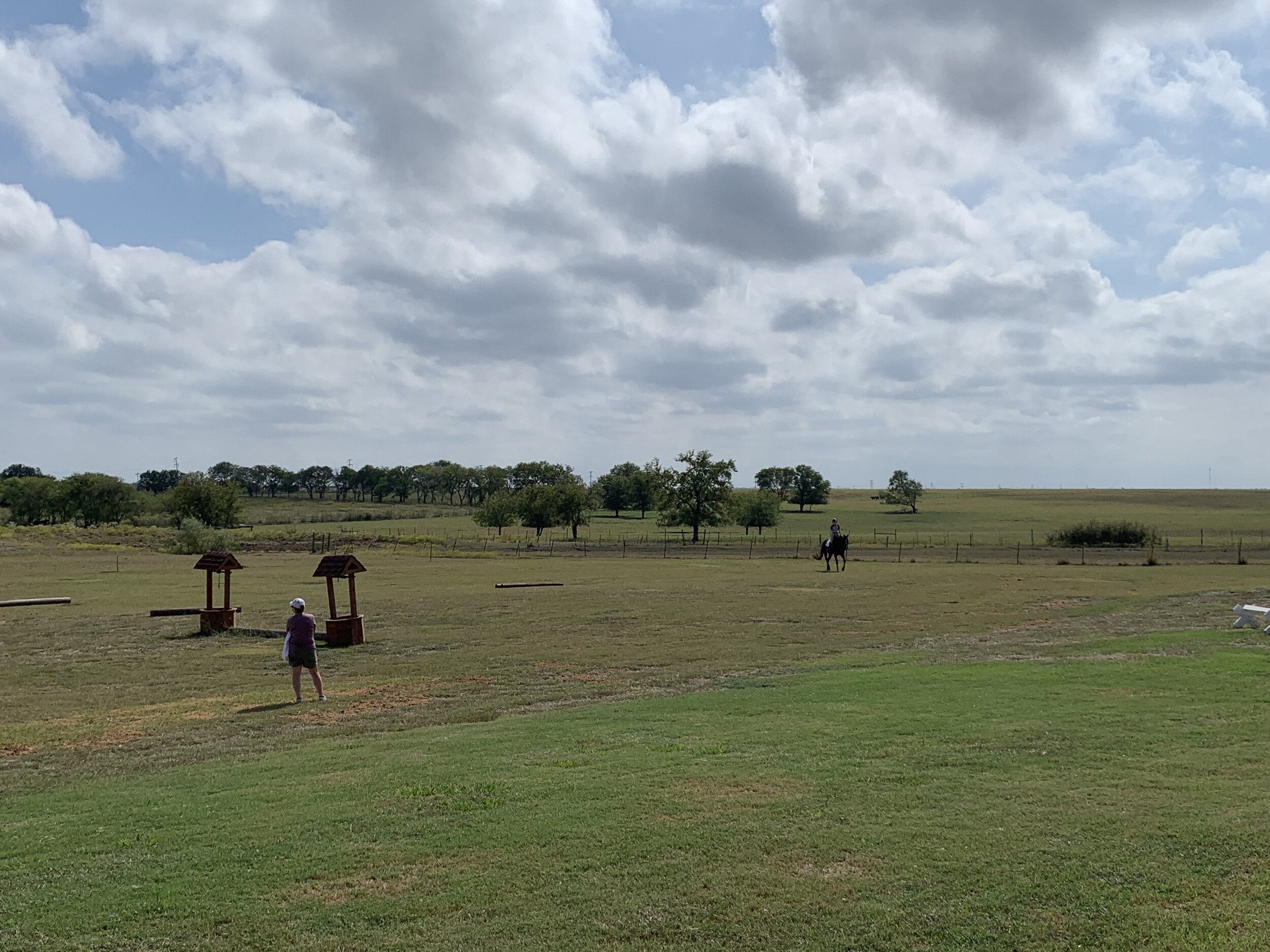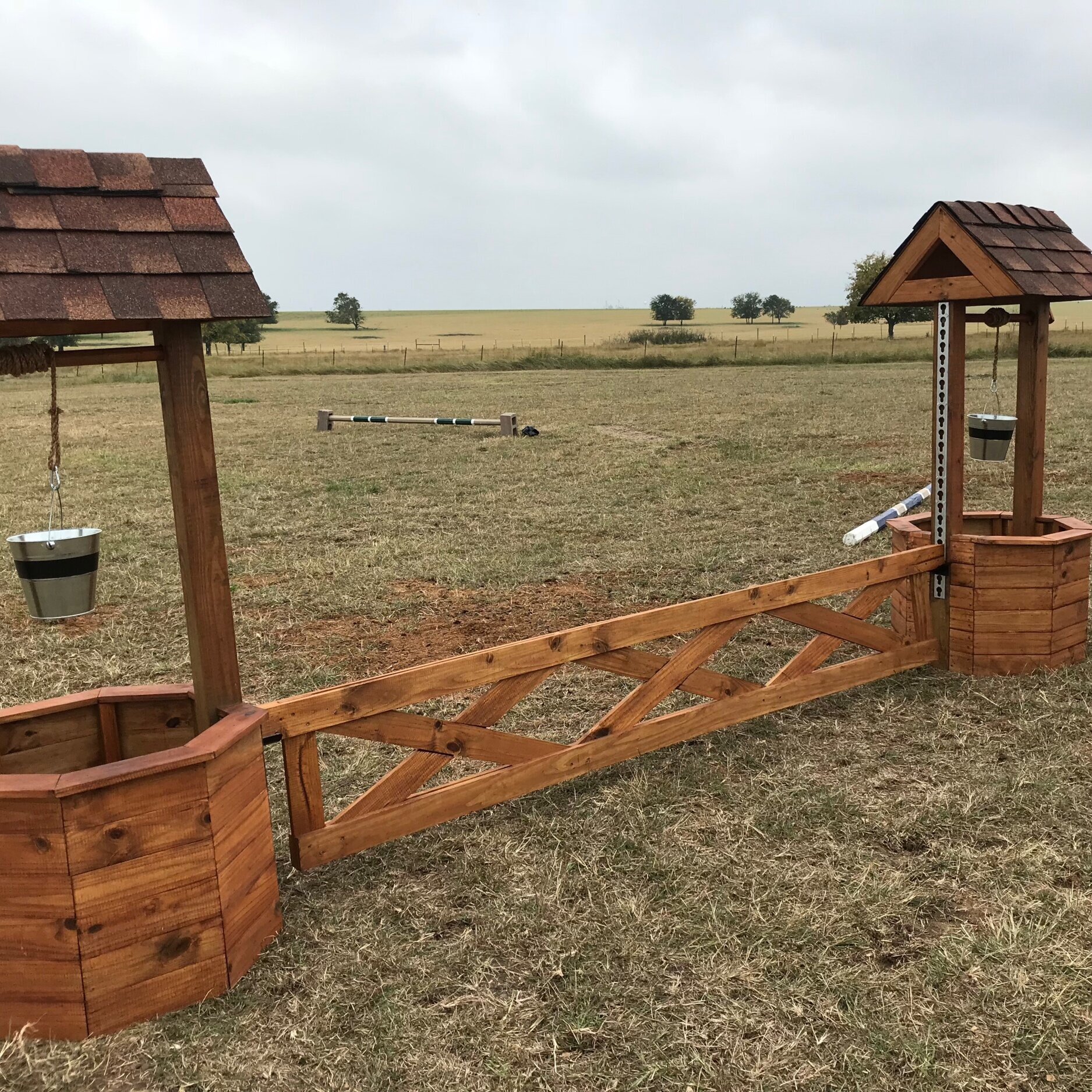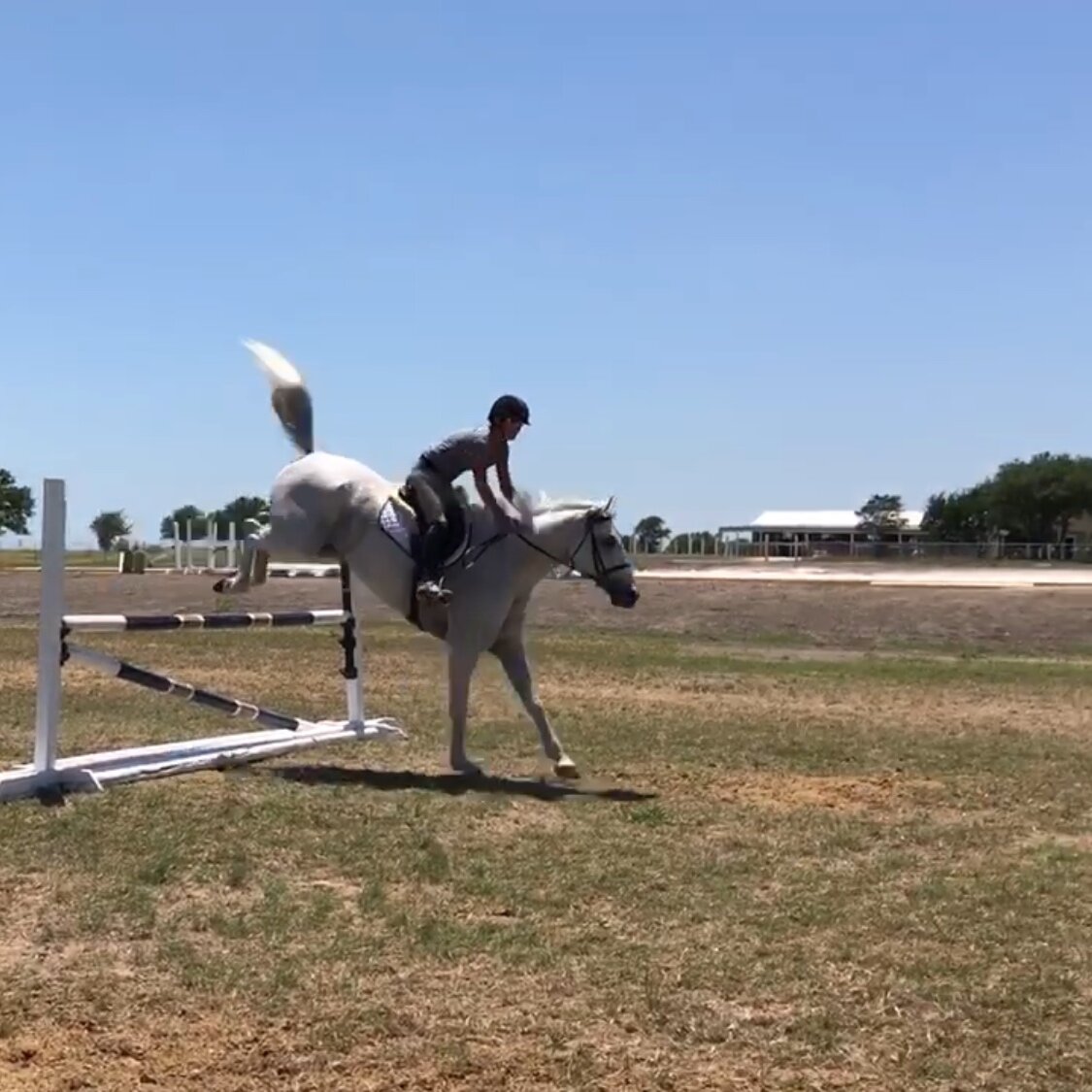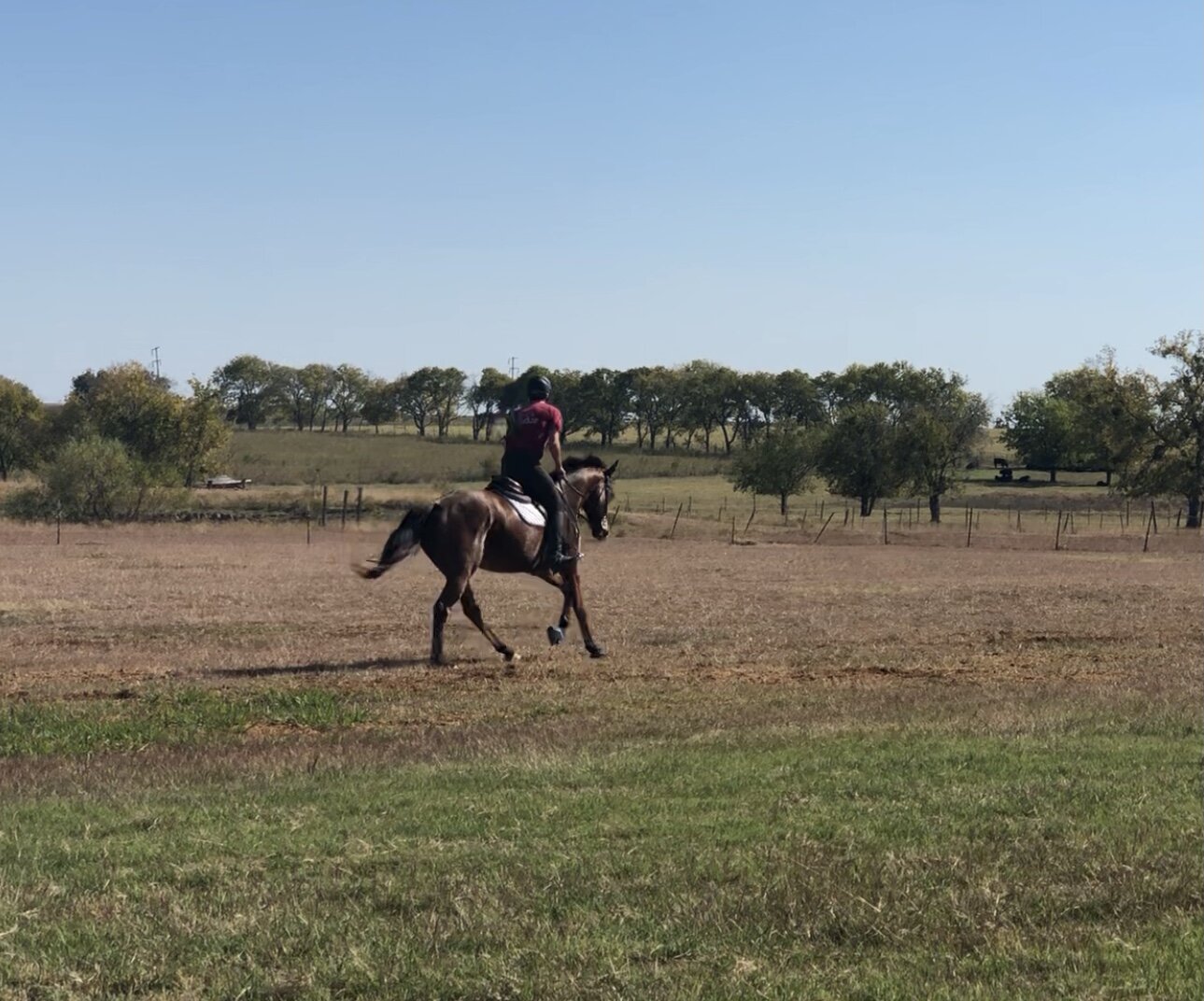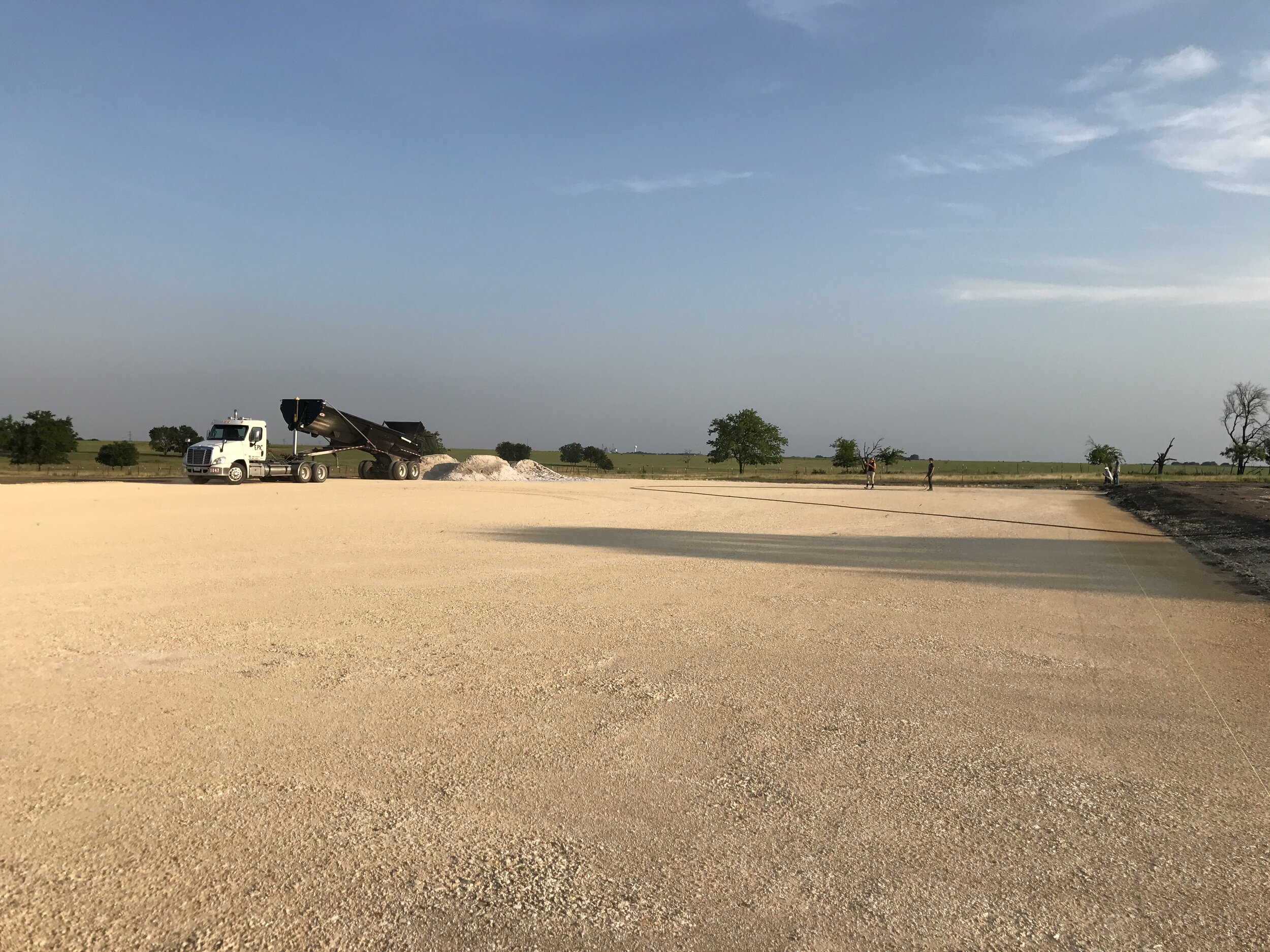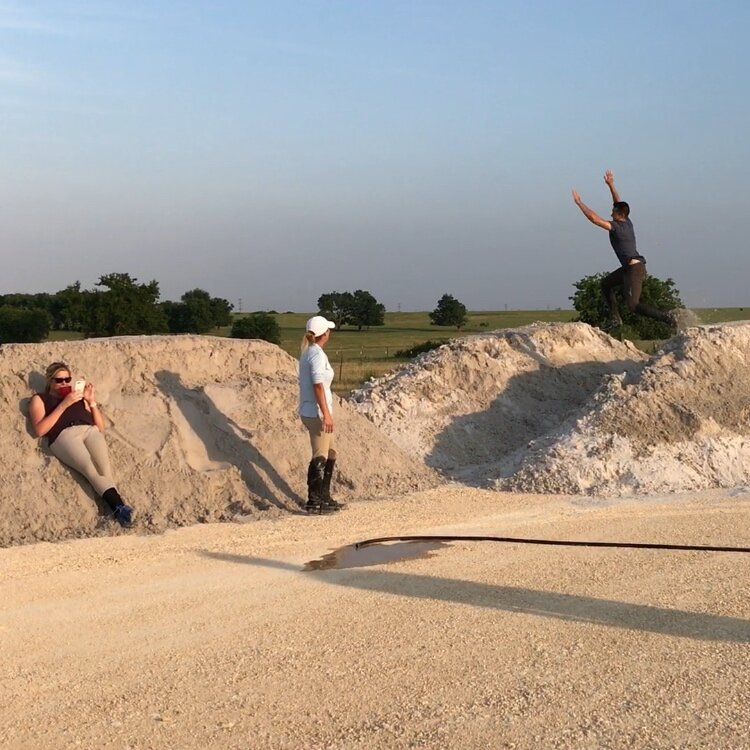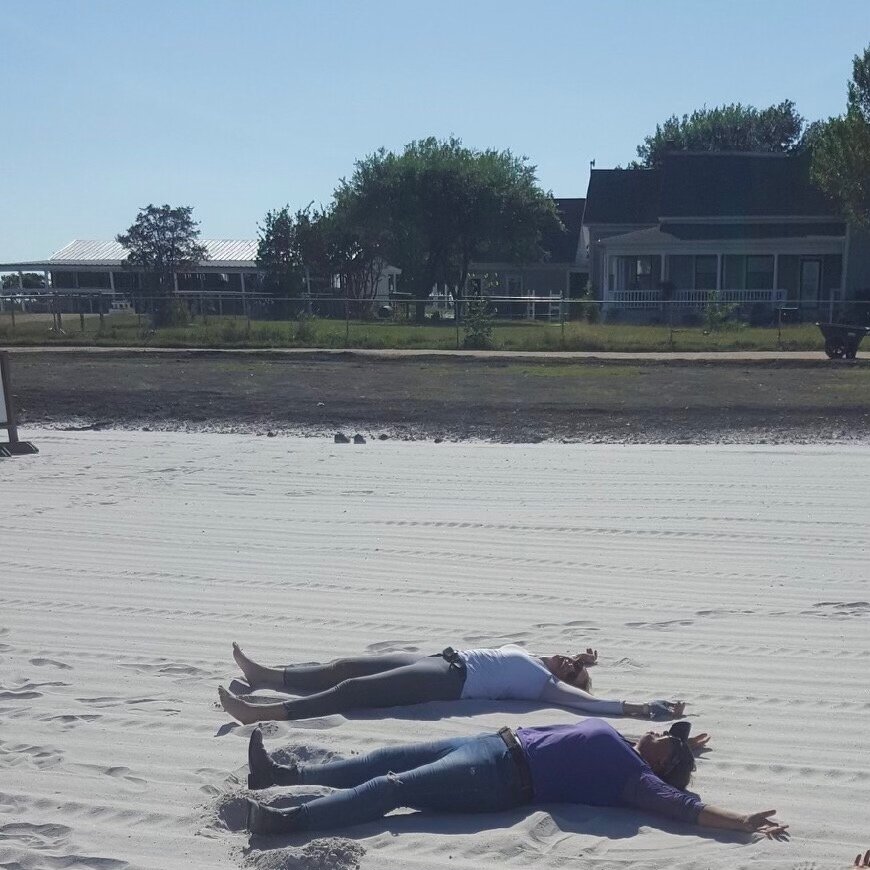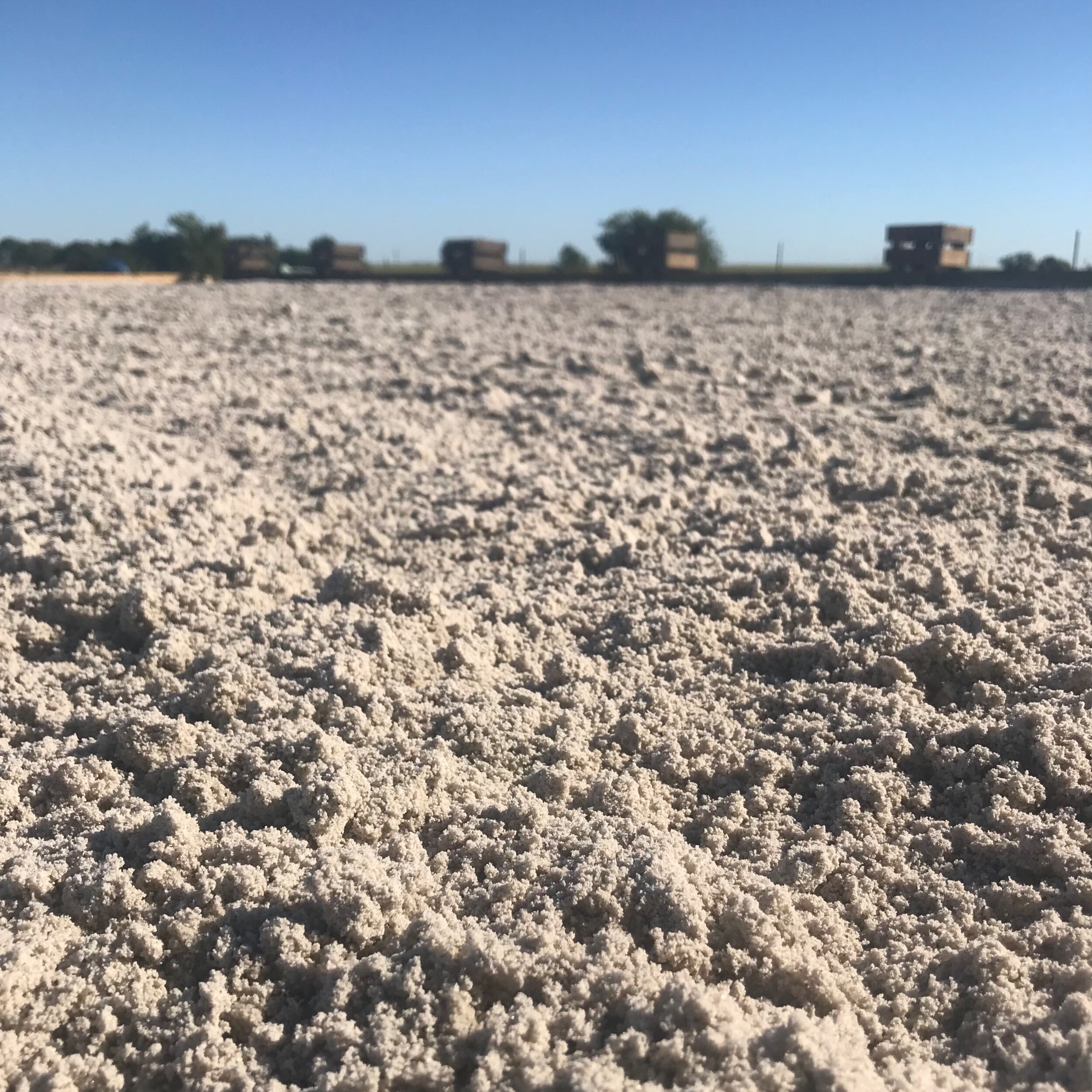When we decided to start Still Point Farm, we had many ambitions for what we wanted to build. Among those:
Creating a horse-first environment
Having a string of horses well-trained on ground and undersaddle
Doing it all with a group of people that are an incredible barn family, devoted to horsemanship, learning and growth, and their animals
However, the original logistical priority and impetus for Still Point Farm, was the arena footing. We built everything around having the best hunter jumper footing possible, to do the very best we could to ensure consistent soundness and longevity.
The biggest investment made, after the purchase of the farm itself, was the arena. Lindsey did literally years of research and planning to create the very best footing she possibly could. The arena continues to be an evolving, improving project, but it’s not a stretch to say it is currently among the best arena footing in Central Texas for hunter/ jumpers.
The Two Main Footing Problems to Solve
The two main arena footing issues with we wanted to solve were:
1) Minimization of soft-tissue injuries: In other arenas, where we had little control over the structure and maintenance, we had what seemed to be an inordinate amount of soft-tissue injuries, even though we took every caution to take exceptional care of the horse’s legs and bodies. The base though, seemed unlevel and unreliable, and potentially the source of the issues. Could we start from scratch and build a better arena?
2) Dealing with the Central Texas rain accumulation: In the fall, winter, and spring, we tend to get a good bit of rain. Texas weather is rarely predictable, and we also often have drought conditions. But at the time, we would have a day of rain, and then the water would not drain from the arena for many more days- even though the sun was shining and the weather was great for riding. But the footing was not safe for the horses. Could we engineer the ring with a consistent grade and appropriate avenues to drain effectively.
First Things First: A Solid Base
Without a solid base under the footing, it doesn’t matter what kind of sand or textile product you have. Think of it like building a house, it doesn’t matter how fancy the finish out is - granite this, marble that - if the foundation is shoddy, it will crumble just the same. When you consider the base, you have to consider the appropriate material, as well as the specific, carefully calibrated application of that material. And then finally, letting it rest and settle before putting any actual footing down.
After speaking to a number of different contractors, Lindsey was concerned that it might be problematic to find one with the skilled staff, heavy machinery, and understanding to build a base with perfectly level footing on an exact and consistent 1% grade to allow water to drain when it rains. But, through a serendipitous connection made by her husband Austin, Lindsey was overjoyed to have the opportunity to work with Chasco Constructors. In Central Texas, Chasco is one of the biggest and best when it comes to roads and surfaces. They even build airport runways- they were certainly capable of putting down the Still Point base accurately- but for them it was a very small-time project. It was absolutely a stroke of luck and a testament to Lindsey’s passion and Austin’s charisma that they were able to convince them to take the job.
Chasco spent over a month working on the base. They used their heavy rollers- the same ones used on airport runways, and watching the “blade” man work to get the absolute perfect 1% grade almost seemed miraculous. The guys from Chasco were incredibly diligent making sure they understood the needs of the project and that every measurement was exact. Lindsey worked closely with them, every day, and they became a great part of the team. We were sad to see them go when the base was finally complete.
During that time, our horses were already moved in at Still Point, so we rode in the grass field adjacent to the arena. It was certainly big enough and flat enough, and it worked really well as a temporary solution, and even now it’s a great place to ride to change it up for the horses.
The Biggest Sandbox Ever
We were fortunate that, due to the level of expertise and the quality of equipment, we did not have to wait quite as long as we otherwise would have to put down footing. Originally, we expected to have to let the base settle for 2-3 months. However, it ended up being only about a month before footing was able to be put down, which was very exciting for all of us.
Lindsey had been researching footing in anticipation of this, ordering samples, finding out what was available in our area, and what would hold up best to environmental conditions, as well as absorb shock best for the horses’ legs, while providing enough traction and grip. After much deliberation, Lindsey eventually chose a premium sub-angular silica sand.
The sand was delivered in 15 enormous truckloads, and we were all so excited to see it. There was some definite enjoyment out of our giant new sandbox. Finally, it was time to get to spreading it, taking care to make sure the entire arena was level. Getting that right is a long, involved (tedious) project, requiring again heavy machinery and expertise. It also required some ingenuity from us to get it all spread, and spread some more, and spread exactly level. It was a long, but rewarding and fun project for all of us.
Tractor and Drag
At this time, it was necessary to have our own heavy machinery. Lindsey selected a Kubota compact tractor and a specialized drag from Premier Equestrian. She also very quickly became an expert in the operation of both- perhaps watching Chasco so closely had taught her a little something. She did a lot of the leveling work herself, with the rest of us assisting by hand with shovels and rakes.
Mixing in the Textile
After the leveling of the sand, we could start to ride on our brilliant white surface, which was thrilling after all the time spent anticipating it. However, the project was not complete. Lindsey ordered 10 enormous bales of ArenaAid arena additives from Premier Equestrian. We are very lucky to have a fantastic group at Still Point Farm, and are so grateful that so many were willing to help us with the very laborious process of properly mixing and incorporating the additive in with the sand. Here’s a rough overview of the process:
Break the bales up, using bolt cutters to cut the wires that contain them and then gloved hands and a chisel to break off large pieces.
Transfer these large pieces to an RTV or wheelbarrow; and then distribute them around the arena, chunk by chunk.
Use a rake (and then get frustrated and use your hands, or more frustrated and use an electric lawnmower) to break up the pieces further.
Lindsey would then maneuver the tractor and drag around again and again to mix it in.
Set up sprinklers to get all of it well soaked and incorporated.
Hack hack hack over it to get it really fully mixed in.
This process happened with each bale, and two were reserved to finally incorporate in another year’s time. It took months to get those first several bales of textile in, but once they were, it was so worth it. The footing held so much better with impact, it was more springy and buoyant, and it held moisture better. Horses and riders felt secure and steady practicing jumping and turns.
The Payoff
Most of the above happened throughout year one at Still Point Farm. That first winter, we had our footing in place and it was wonderful. We seemed to have addressed, successfully, our two main goals. Firstly, the horses held up much better than they had in previous situations. The soft-tissue injuries that had plagued us in the past seemed to stop altogether. Secondly, the arena drained beautifully- and continues to do so. Most of the time, even with very heavy rain, we are ready to ride again within 24 hours and it feels fantastic. The arena requires maintenance to stay level, to keep the proper consistency, but we have been able to keep up and the footing has performed brilliantly.
Arena Lights
In year two, Still Point gained arena lights to allow for riding after dark. We were able to use LED lights, which have better longevity and are better for the environment, and produce brighter and more consistent lighting. Our arranangement of six lights functions perfectly to allow us to continue training in the winter evenings.
Moisture Management
In year three, Still Point got a high-end sprinkler system. The sun and wind on the Central Texas plains can make it very challenging to keep the appropriate level of moisture in the footing. So, when it’s a drier time, we were having to keep sprinklers running almost all day every day, and moving them constantly. Now, the sprinkler system does the majority of the watering in a matter of minutes from a tank, and we then touch up the areas they don’t quite reach in a much smaller amount of time, with a lot less back and forth for staff.
Looking Ahead
The arena remains the focus, and the priority at Still Point, and will always be a continuing project. We prioritize the arena over the fanciness of the barn, over landscaping, over high-end show equipment, and everything else because we believe it is the absolute best we can do for our sporthorses and their longevity. This was the original reason for creating Still Point Farm, and we are proud of what we have accomplished for our horses and riders. Veterinarians and other professionals are always very impressed with our setup and the reliability of our arena footing, and it feels great to hear. This will remain a labor of love for Lindsey and Still Point Farm, always.

